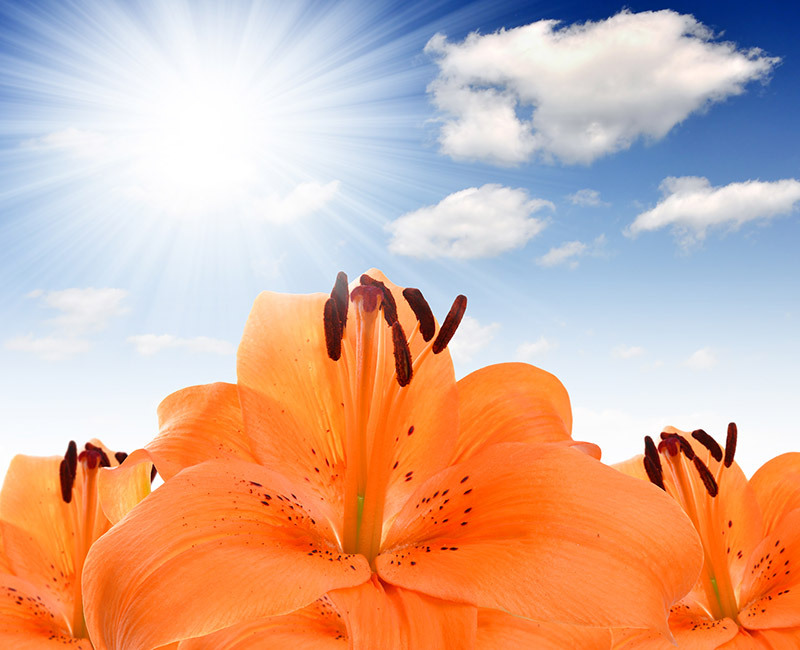Extend the Life of Your Poinsettias
Posted on 27/06/2025
Extend the Life of Your Poinsettias: A Complete Guide
Poinsettias (Euphorbia pulcherrima) are beloved winter plants that fill homes and offices with festive color during the holiday season. However, many are unaware that these beautiful red, pink, or white bracts can thrive well beyond the holidays--with the right care. Do you want to keep your poinsettias looking healthy and vibrant for months, or even years? This comprehensive, SEO-optimized guide will show you how to extend the life of your poinsettias and enjoy their stunning beauty long after the last holiday decoration is packed away.

Understanding Your Poinsettia Plant
To keep poinsettias alive and flourishing, it helps to understand their natural cycle. Originating from Mexico, poinsettias are not disposable holiday flowers but are actually perennial shrubs in their native environment. With proper care, your poinsettia plant can survive for years, grow taller, and even rebloom with its signature colorful bracts.
Key Characteristics of Poinsettias
- Scientific Name: Euphorbia pulcherrima
- Family: Euphorbiaceae
- Average height (as houseplant): 1-2 feet
- Bloom colors: Red, pink, white, marble, yellow
- Total bloom period: November through March (with proper care)
How to Prolong the Life of Your Poinsettias
Many poinsettias are discarded when leaves drop or bracts fade. But, with consistent care, it's possible to maintain poinsettia health and even enjoy reblooming next holiday season. Here are the essential tips to maximize the lifespan of your poinsettia plant.
1. Choose a Healthy Poinsettia Plant
- Look for vibrant, unblemished bracts and dark green leaves.
- Avoid plants with yellowing leaves, wilting, or evidence of pests.
- Check that the plant has plenty of leaves right down to the soil line.
2. Provide the Right Temperature Conditions
Poinsettias thrive in temperatures between 65-70?F (18-21?C) during the day. At night, it's best to keep them above 60?F (15?C).
- Protect from drafts and sudden temperature changes.
- Keep away from heaters, radiators, or cold windowpanes.
- Temperature fluctuations can cause leaf drop and stress the plant.
3. Give Optimal Light for Longevity
Poinsettias need bright, indirect sunlight for at least six hours a day:
- Place near an east- or south-facing window with filtered light.
- Avoid direct sun, which can scorch leaves and bracts.
- Rotate your poinsettia periodically for even growth.
4. Master Poinsettia Watering
Proper watering is key to extending the life of your poinsettia. Over-watering and under-watering cause the most common issues:
- Water when the surface soil feels dry to the touch.
- Ensure pots have excellent drainage; never leave the plant in standing water.
- Discard excess water in saucers after watering.
- Avoid letting the soil dry out completely.
5. Watch Humidity Levels
Indoor air tends to be very dry in winter. Poinsettias prefer relative humidity of 40-60%.
- Use a humidifier nearby or place the pot on a tray of wet pebbles.
- Mist the plant gently if your home is particularly dry.
6. Regular Feeding Keeps Poinsettias Lush
While blooming, poinsettias don't require much fertilizer. To make poinsettias last longer post-holidays, start feeding after blooming:
- Apply a balanced, all-purpose fertilizer (like 10-10-10) every 2-4 weeks.
- Follow label instructions to prevent nutrient burn.
The Poinsettia Life Cycle: Month by Month
Winter (December-March): Enjoy Your Blooming Poinsettia
- Keep in a bright, warm spot and water when soil is dry.
- Prune off faded, yellow, or dead leaves to keep the plant tidy.
- If leaves drop, it's often due to overwatering or cold drafts. Adjust care accordingly.
Spring (April-May): Prepare for the Growing Season
- When the bracts have faded and growth slows, it's time to prune.
- Cut stems back to about 4-6 inches tall, leaving several healthy leaves on each stem.
- This encourages bushier growth and prevents legginess.
- Repot into fresh soil if roots have filled the container.
Summer (June-August): Encourage Healthy Growth
- Move your healthy poinsettia outside to a shaded, sheltered area after risk of frost.
- Continue to water and feed every 2-4 weeks.
- Pinch growth tips in June and again in July to promote branching.
Autumn (September-November): Start the Rebloom Process
- Poinsettias set buds and change color in response to shorter days and longer nights.
- Beginning in late September or early October, give plants complete darkness for 14-16 hours every night (for about 8-10 weeks).
- Cover with a box or move to a dark closet from around 5-6 p.m. to 7-8 a.m., then return to bright light during the day.
- Continue regular watering and feeding.
Proper darkness is key to getting your poinsettia to rebloom!
Common Problems in Poinsettia Care and How to Solve Them
Leaf Drop
- Often due to overwatering, underwatering, or sudden temperature drops.
- Check roots for rot if the plant wilts despite moist soil.
Pale or Yellow Leaves
- Usually caused by insufficient light or nutrition.
- Move to a brighter location and consider a weak fertilizer dose.
Dried or Curled Bracts
- Indicates air is too dry or plant is in direct sun.
- Increase humidity and move out of harsh sunlight.
Pest Issues
- Look out for whiteflies, spider mites, or aphids, especially if placed outdoors for summer.
- Shower leaves with water and, if needed, use insecticidal soap.
Tips to Extend the Life of Your Poinsettias Year After Year
Grow Your Poinsettia Like a Perennial
- With proper seasonal care, reblooming is achievable.
- Repot in spring every 1-2 years to maintain healthy root growth.
- Be patient--poinsettias need 8-10 weeks of consistent darkness to set colorful bracts for the next holiday season.
Propagation: Create New Poinsettia Plants
- In late spring or early summer, take 4-6 inch stem cuttings with at least 3 leaves.
- Dip the cut base in rooting hormone and plant in moist, sterile potting mix.
- Keep in a warm, humid spot out of direct sun until well-rooted (about a month).
Decorative Ideas for Year-Round Appeal
- Mix your poinsettia with green foliage houseplants after the holidays for a lush arrangement.
- Pair white or pink types with ferns, ivy, or trailing plants.
- Transplant outdoors in frost-free climates for late-year color in the garden.
Frequently Asked Questions About Poinsettia Longevity
How long can a poinsettia live?
With correct care, a poinsettia can live for several years and rebloom annually. Many enthusiasts successfully keep poinsettias for 3-5 years, or even longer as attractive foliage plants.
Why are the leaves falling off my poinsettia?
Poinsettia leaves may drop due to sudden temperature changes, drafts, overwatering, or insufficient light. Ensure steady conditions and adjust care as necessary.
How do I get my poinsettia to turn red again?
To encourage reblooming, provide 14-16 hours of uninterrupted darkness each night from late September through early November. Resume normal light during the day. This mimics shorter winter days and stimulates colorful bracts.

Poinsettia Care Myths Debunked
- Poinsettias are not poisonous--they are only mildly toxic to pets and children in large amounts, and rarely cause more than mild irritation.
- Poinsettias are not annuals; they are perennials in their native Mexico.
- Leaving them in the original plastic wrapper will harm them due to poor air circulation--remove decorative wraps at home.
Conclusion: Enjoy Vibrant Poinsettias Beyond the Holidays
By following the tips in this guide, you can extend the life of your poinsettias and enjoy their spectacular color and greenery long after December. Remember, the keys are steady light, warmth, careful watering, and attention to seasonal needs. With a bit of skill and patience, your poinsettia plants can become a cherished, showy part of your home year after year. Don't toss out your poinsettias--nurture them, and watch as they reward you with new growth and brilliant color for holidays to come!
Start today, and let your poinsettias brighten your space all year round!
Latest Posts
Top Floral Choices for Birthday Celebrations
Extend the Life of Your Poinsettias
Discover Your Perfect Flower Match Based on Your Unique Traits





